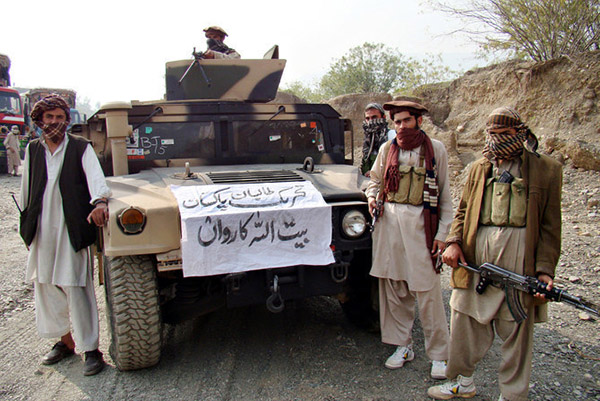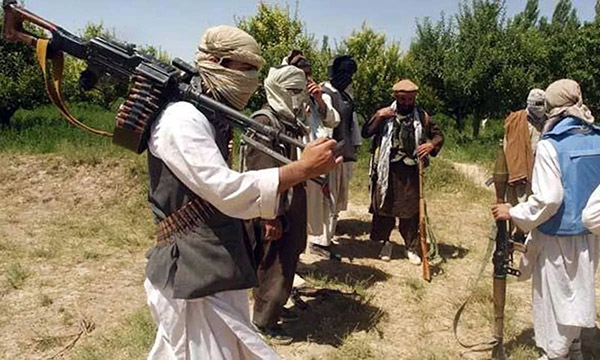

Pakistan Deep State Unable to Rein in TTP
Pakistan is paying the price of soft-peddling on terror. Arming and funding terror outfits against India in the past may have played dividends at one time, but today it is bleeding Pakistan.
The expansion of Tehrik-e-Taliban Pakistan’s (TTP) clout is entirely Pakistan’s fault because it hosted, armed, and supported Taliban leaders and cadres on its land, while turning a blind eye to its misdeeds. In Kabul, a few of these leaders now have ministerial roles.
With the Taliban’s presence in Kabul, Pakistan had previously justified its backing for the Taliban by asserting that it provided greater “strategic depth” against India. The Taliban and ISI had worked together to hijack IC 814 flight to Kabul in 1999. Although New Delhi has not legally recognised the Taliban, it has developed a working relationship with the Taliban leadership in order to provide medical care and other forms of support to the Afghan people as well as to keep a presence in Kabul.
Islamic terror groups across the region were reinvigorated after the Afghan Taliban’s victory over the US. The fact that the Taliban could win against the world’s most powerful army was a morale booster. The TTP now felt that it was only a matter of time before the Pakistan forces could also be overrun.
Background
The Pakistani Taliban share a common ideology with the Afghan Taliban and have assisted them in the ––2001-2021 war, but the two groups have separate operation and command structures.
The TTP’s aim is to overthrow the government of Pakistan by waging a terrorist campaign against the Pakistan armed forces and the state. The TTP depends on the tribal belt along the Afghanistan–Pakistan border, from which it draws its recruits. The TTP receives ideological guidance from and maintains ties with al-Qaeda.
After the Taliban takeover of Afghanistan in August 2021, Pakistan was unable to persuade the Afghan Taliban to crack down on the TTP.
Ever since a ceasefire with TTP expired on 10 December 2021, it has increased attacks on Pakistani security forces from sanctuaries inside Afghanistan.
Apparently with US encouragement and cooperation, Pakistan is now threatening to attack TTP militants residing in its Pashtun-dominated tribal regions as well as across the border in Afghanistan. As a result, Pashtuns on both sides of the Durand Line might band together to fight the Pakistani army. While Pakistani attacks against TTP and Taliban bases may be welcomed by the US, the Taliban will not remain silent if its people are attacked.
The rise of the TTP could potentially trigger a conflict within the organisation itself with the international terrorist organisation ISIS, which is also vying for control of the Afghanistan-Pakistan region.
Rising Casualties
Pakistan’s security forces, including troops, ISI personnel, police, and regular civilians, have become targets of the TTP militants’ increasingly violent attacks.
282 personnel of the security forces were killed in terrorist and insurgent attacks in Pakistan in 2022, according to statistics released by the non-governmental Centre for Research and Security Studies (CRSS), which has its headquarters in Islamabad. According to the Institute for Conflict Management (ICM), situated in Delhi, this nuamber is six times more than the number of Indian security officers (47).
In 2022, the TTP perpetrated 376 terrorist incidents, resulting in 533 fatalities and 832 injuries. Among them, 374 Pakistani security officers and 365 TTP fighters are thought to have perished in fighting in the previous year.
The deadliest month in more than ten years – December 2022 – saw 56 fatalities as a result of the deteriorating ISI-TTP relationship.
Since the middle of November, there have been over 100 attacks. The TTP’s 18 December attack on the Counter Terrorism Department in Bannu was the most notable of these events
TTP’s Demands
Delegitimization of Pakistan’s claim to a region bordering Afghanistan is one of the TTP’s demands. This entails restoring FATA’s status as a semi-governed region.
The Afghan Taliban also wholeheartedly supports the removal of border fencing and barriers. The only long-term, but currently improbable, option is to foster goodwill, give up using force, and manage boundaries.


The TTP wants to impose Afghan-style Sharia in FATA before extending the system across Pakistan. This include ending female education, instituting limb-chopping justice, replacing democracy with a shura system run by an amirul momineen, and sealing Pakistan off from the outside world. This is grotesque to non-Muslims, Shi’ites, (Sunni) Barelvis, and modern-minded Muslims. On the other hand, backward regions and radicalised segments of urban Pakistani society favour this interpretation of Sharia.
TTP vehemently rejects both disarming and adhering to Pakistan’s Constitution. Instead, it is adding new demands that no sovereign state could ever agree to.
Pakistan’s readiness to negotiate with TTP militants and caving in to their demands has considerably boosted their confidence. Top TTP members, like Muslim Khan and Ehsanullah Ehsan before him, were surreptitiously released, as an example.
Pakistan in a Cleft Stick
The government is under pressure to take strong action against the TTP. Similar to a patron-client relationship gone sour, the confrontation between Pakistan and the Afghan Taliban is getting worse. Pakistan is currently going through a complex crisis that may be its worst since 1971, when it split up as a result of the Bangladesh conflict. The crisis in Pakistan is overwhelming, and there is a pervasive sense of being lost among the political and military elite.
The TTP and the Afghan Taliban have crossed across to Pakistan on the northern front. The Taliban’s win in Afghanistan was seen by the ISI as a chance to rule Kabul, giving Pakistan a substantial amount of “strategic depth.” Once the Taliban seized power in Afghanistan in August 2021, Islamabad might have thought that by setting up an allied force in Kabul, it had achieved its planned strategic objectives. Pakistan anticipated that it would be better able to manage the TTP situation. Yet, it appears that the Taliban started to object to Pakistan interfering with its internal affairs. Now that the client is openly biting its patron, Islamabad has no choice except to combat the TTP.
Dangers for India
The establishment of fidayeen (suicide) camps in Gilgit-Baltistan regions of Pakistan Occupied Kashmir (POK) and TTP’s declaration of a shadow government in the Federally Administered Tribal Areas (FATA) and the neighbouring Khyber Pakhtunkhwa region could have an impact on the situation in Jammu and Kashmir (J&K).
The TTP has between 12,000 and 14,000 fighters and suicide bombers stationed in POK. To solidify their authority in the area, the Pakistani security forces are planning a significant operation that will include airstrikes. This might potentially trigger a humanitarian crisis that would affect India, notably in J&K.
Pakistani Army Proxies
With the Tehreek-e-Taliban (TTP) and other anti-State jihadists on the rise, Pakistan is once more grooming the Lashkar-e-Taiba (LeT) and Jaish-e-Mohammad (JeM0 as devoted proxies. Evidence of the Lashkar’s infrastructure continuing to function and the group’s ability to mobilise resources and cadre has been seen for months.
Ever since General Pervez Musharraf’s split from the jihadist movement in 2001, which led thousands of people to join anti-regime groups like the TTP and al-Qaeda, the need for obedient, submissive proxies like the Jaish and Lashkar has gotten even stronger.
The TTP has decided to strike the Pakistani Army as well as State-Patronized Terrorist (SPT) organisations including the JeM) and LeT. Both The leader of the JeM, Maulana Masood Azhar, has been ill for a while and is unable to take on the TTP’s challenge.
The LeT and the JeM have taken a direct part in terrorist activities in J&K and the hinterland of India.


















